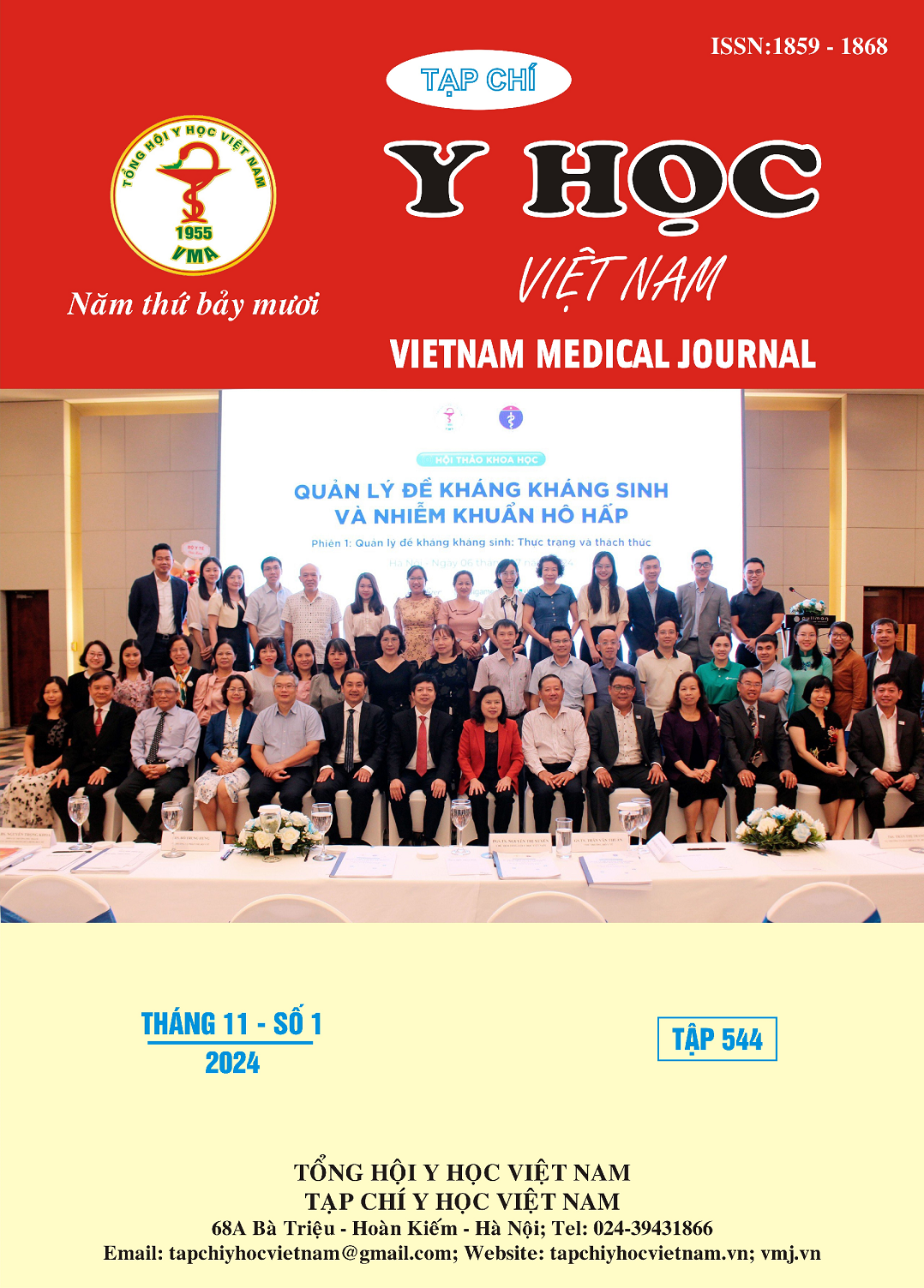NGHIÊN CỨU TÌNH HÌNH ĐỀ KHÁNG KHÁNG SINH CỦA NHÓM VI KHUẨN ESKAPE VÀ CHI PHÍ LIÊN QUAN TẠI BỆNH VIỆN BỆNH NHIỆT ĐỚI GIAI ĐOẠN 2020-2021
Nội dung chính của bài viết
Tóm tắt
Đặt vấn đề: Đề kháng kháng sinh là vấn đề toàn cầu với gánh nặng kinh tế và bệnh tật ngày càng tăng. Nghiên cứu này nhằm phân tích đặc điểm và so sánh chi phí điều trị bệnh nhân đề kháng và không đề kháng kháng sinh của vi khuẩn ESKAPE. Đối tượng và phương pháp nghiên cứu: Nghiên cứu hồi cứu đánh giá gánh nặng kinh tế của các vi khuẩn ESKAPE từ tháng 1/2020 đến tháng 10/2021 tại Bệnh viện Bệnh Nhiệt đới, TP.HCM. Kết quả: Trong 2130 trường hợp phân lập được, có 1176 ca đề kháng (chiếm 55,23%) và 954 ca nhạy cảm (chiếm 44,77%). E. coli chiếm tỷ lệ cao nhất (31.22%), tiếp theo là S. aureus (20,19%), K. pneumoniae (20,09%), P. aeruginosa (14,51%) và thấp nhất là A. baumannii (13,99%). Nghiên cứu cho thấy tỷ lệ bệnh nhân đề kháng cao hơn bệnh nhân nhạy cảm ở các vi khuẩn A. baumannii, E. coli, K. pneumoniae và S. aureus. Các ca đề kháng ở tất cả các nhóm vi khuẩn đều có độ tuổi trung vị cao hơn, thời gian nằm viện dài hơn, tỷ lệ tử vong cao hơn, chi phí điều trị cũng cao hơn đáng kể so với các ca nhạy cảm. Tỷ lệ tử vong cao nhất được ghi nhận ở nhóm bệnh nhân nhiễm A. baumannii, thấp nhất ở nhóm E. coli. P. aeruginosa đề kháng có tổng chi phí điều trị trung bình cao nhất (339 triệu VNĐ), E. coli đề kháng có tổng chi phí thấp nhất (49 triệu VNĐ). Chi phí thuốc, đặc biệt là thuốc kháng sinh, chiếm tỷ lệ cao nhất trong chi phí điều trị ở tất cả các nhóm vi khuẩn. Đa số bệnh nhân không hưởng bảo hiểm y tế, ngoại trừ E. coli có tỷ lệ hưởng 80% bảo hiểm cao. Kết luận: Đề kháng kháng sinh là một vấn đề nghiêm trọng, tỷ lệ bệnh nhân đề kháng ngày càng cao chi phí điều trị cũng có xu hướng tăng theo thời gian với các biến động đáng kể, nhấn mạnh tầm quan trọng của việc kiểm soát kháng kháng sinh và tối ưu hóa chi phí điều trị.
Chi tiết bài viết
Từ khóa
Chi phí trực tiếp y tế, đề kháng kháng sinh, kháng sinh, ESKAPE.
Tài liệu tham khảo
2. Thảo Huỳnh Phương (2020). Đánh giá chương trình quản lý sử dụng kháng sinh tại Bệnh viện Bệnh Nhiệt Đới trước và sau can thiệp trong giai đoạn 2016 - 2020. Luận án chuyên khoa cấp 2. Đại Học Y Dược Thành Phố Hồ Chí Minh; 2020.
3. Arbune, M., Gurau, G., Niculet, E., et al. (2021). Prevalence of Antibiotic Resistance of ESKAPE Pathogens Over Five Years in an Infectious Diseases Hospital from South-East of Romania. Infection and drug resistance, 14, 2369–2378.
4. Center For Disease Dynamics EP. Antibiotic Resistance Threats in the United States. 2019. 27/08/2021. https://www.cdc.gov/ drugresistance/biggest-threats.html
5. Hutchings, M. I., Truman, A. W., & Wilkinson, B. (2019). Antibiotics: past, present and future. Current opinion in microbiology, 51, 72–80.
6. Kim CJ, Kim HB, Oh MD, et al. (2014) The burden of nosocomial staphylococcus aureus bloodstream infection in South Korea: a prospective hospital-based nationwide study. BMC infectious diseases. 14:590.
7. Santajit, S., & Indrawattana, N. (2016). Mechanisms of Antimicrobial Resistance in ESKAPE Pathogens. BioMed research international, 2016, 2475067.
8. Shrestha, P., Cooper, B. S., Coast, J., et al. (2018). Enumerating the economic cost of antimicrobial resistance per antibiotic consumed to inform the evaluation of interventions affecting their use. Antimicrobial resistance and infection control, 7, 98.


